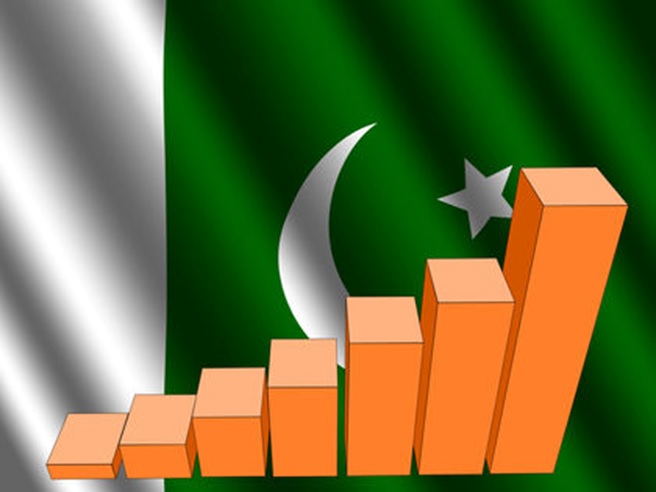
Encyclopedia of the Nations
The State of Pakistan
By Nayyer Ali MD

Pakistan is going through a rather turbulent time politically, and economic challenges are getting headlines, causing many to worry if the future is dim. But taking a closer look at what the economic data is showing is reassuring that the underlying positive trend remains intact.
Pakistan’s economy grew about 6% last fiscal year, and the current fiscal year is going to end in June, so we will get some fresh numbers. Despite the challenges of COVID and of the surge in global prices and inflation, growth should still be over 5% this year, perhaps a bit faster.
Pakistan’s largest companies are doing extremely well, with quarterly profits reaching a record high for the Karachi Stock Exchange 100 (KSE 100), up 34% compared with last year. Over the last 9 months the KSE 100 are showing profits up 23% compared with the previous year. Sales for the KSE 100 were up 46% in the third quarter ending in March compared with March 2021. Among the best indicators of economic performance is tax collection, as no one has an incentive to pay more taxes than they must. Tax collection in April was 480 billion rupees, up 25% compared with last year, and in the ten months of this fiscal year collections are at 4.86 trillion rupees, up 29% compared with prior year.
Trade numbers are also looking good on the export side. Total exports are 2.87 billion dollars for April, up 30% over last year, and for the 10 months this fiscal year are at 26 billion dollars, up 25% over last year.
Imports are also surging, with the very high cost of petroleum pushing the numbers even higher. Imports were 6.6 billion dollars in April, giving a trade deficit of 3.7 billion dollars. That trade deficit is being covered substantially by remittances, which were 3.1 billion dollars in April, but still leaves Pakistan 600 million dollars short for the month, which needs financing from external sources. It is important that Pakistan continues to rapidly grow exports so it can cover its huge import bill. Textiles are actually doing very well, with April showing a new record high of 1.7 billion dollars in textiles export, and exports up 26% for the year over last year.
The LSM (Large Scale Manufacturing) index is also showing rapid growth up 27% in March compared with March 2021. It is up 10.4% for the year to date compared with last year. Car sales are doing well, though there was a slowdown in April, probably due to rising interest rates as the State Bank of Pakistan is trying to dampen inflation. For the 10 months through April of this fiscal year, car sales are at 228,000, up 50% from last year.
What we are seeing is a clear picture of an economy growing at a rapid clip. There is one fly in this ointment, inflation. Inflation is currently running about 12% for the year, and this is causing a general rise in prices that can be hard to keep up with, especially for the poor. Inflation did slow down to about 7% during the COVID shutdowns, but has risen sharply this year, as it has in the entire world. Rising costs of oil, food, and other commodities, are placing pressure on all economies. The US is seeing inflation near 8%. Central Banks are working to try to bring these numbers down by slowing economic growth. They do this by raising interest rates, which makes economic activity more expensive. Pakistan is doing the same thing, as the State Bank has moved to hike rates fairly aggressively. It will be another 6-12 months until it becomes obvious if enough has been done.
Along with high inflation, there has been the fall in the value of the rupee. After rising up to 152 rupees to the dollar in April 2021, the exchange rate has fallen to 195 to the dollar. This fall makes imports much more expensive for Pakistanis. But it also makes Pakistan’s exports much cheaper for customers overseas. The weakness of the rupee is a double-edged sword, and while consumers want a strong rupee, a weak rupee is good for exporters and domestic producers that compete with imported goods. The rupee value has been allowed to float with the market under the PTI government, which reversed the previous policy of the PML-N that kept the exchange rate fixed. The fixed exchange rate was a disaster for Pakistan, it crippled exporters while encouraging imports. This resulted in a foreign exchange crisis as Pakistan ran out of dollars in 2018, forcing the country to go to the IMF for a bailout. Keeping the exchange rate flexible is the best policy for avoiding having to do that again.
While the rupee has been very weak against the dollar, it is not entirely the fault of the rupee. The dollar has actually been very strong against the entire world’s currencies for the last year, gaining roughly 13% against the euro, yen, and British pound. Pakistan’s rupee has held its value much better against those other currencies.
Pakistan’s biggest issue remains its muddled politics. Imran Khan’s attempt to dissolve the National Assembly and have new elections was blocked by the Supreme Court, which resulted in a no-confidence motion that brought down the PTI government as its necessary allies switched over to a bizarre coalition that included the PPP, JUI, MQM, and PML-N all in a half-hearted alliance brought together by their mutual fear of Imran Khan. The leaders of these parties know they have no legitimacy and no real right to govern Pakistan, but they are going to cling to power and extract as much personal benefit as they can until the clock runs out and new elections will have to be held by next summer. Imran Khan meanwhile has been holding massive rallies around the country demonstrating that he is in fact quite popular. His mix of nationalism, love of country, and anti-corruption and defense of Muslims plays extremely well with voters. He will likely win the next election with a very large majority, which will prevent the opposition parties from doing again what they have done recently to turn him out.

